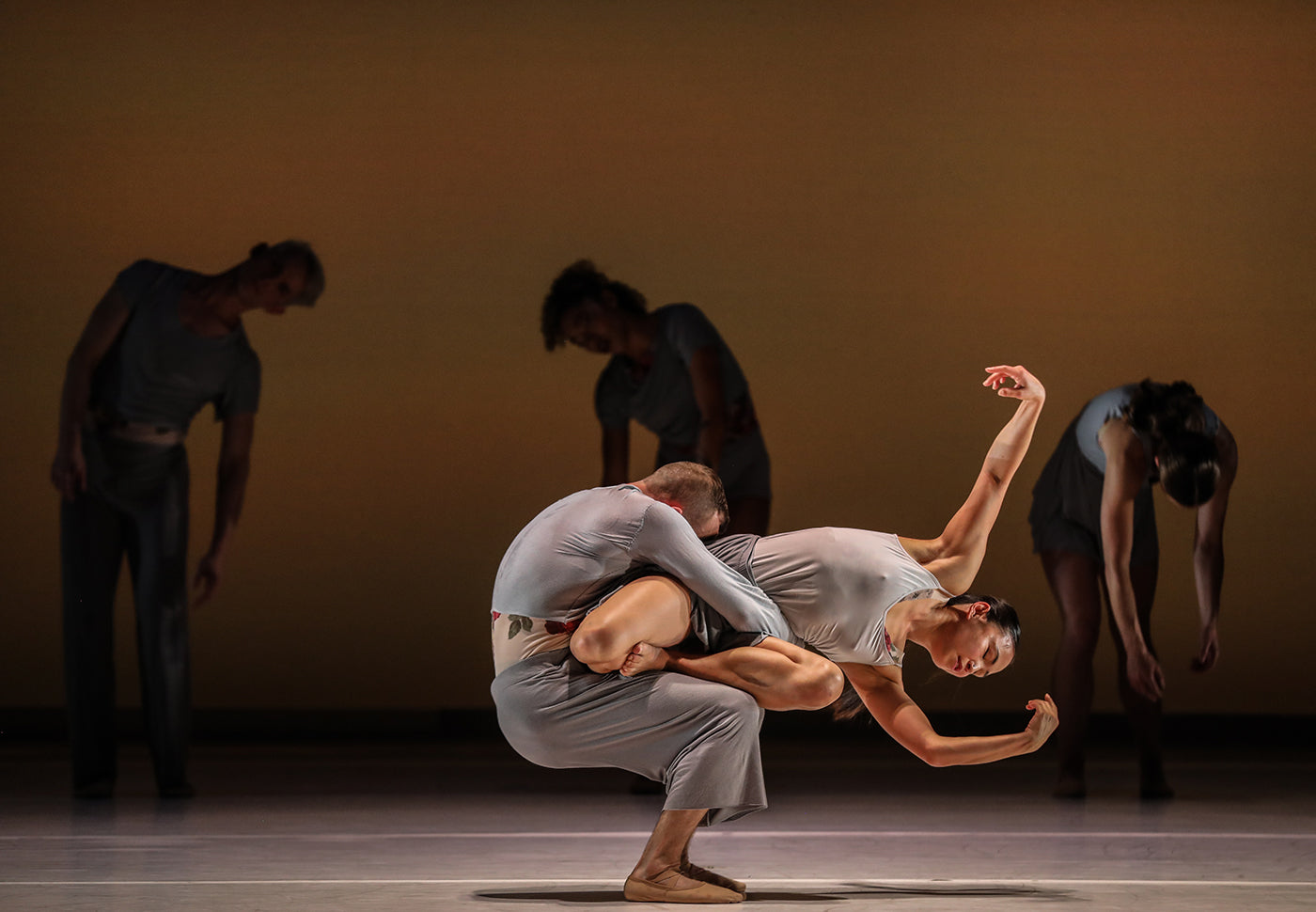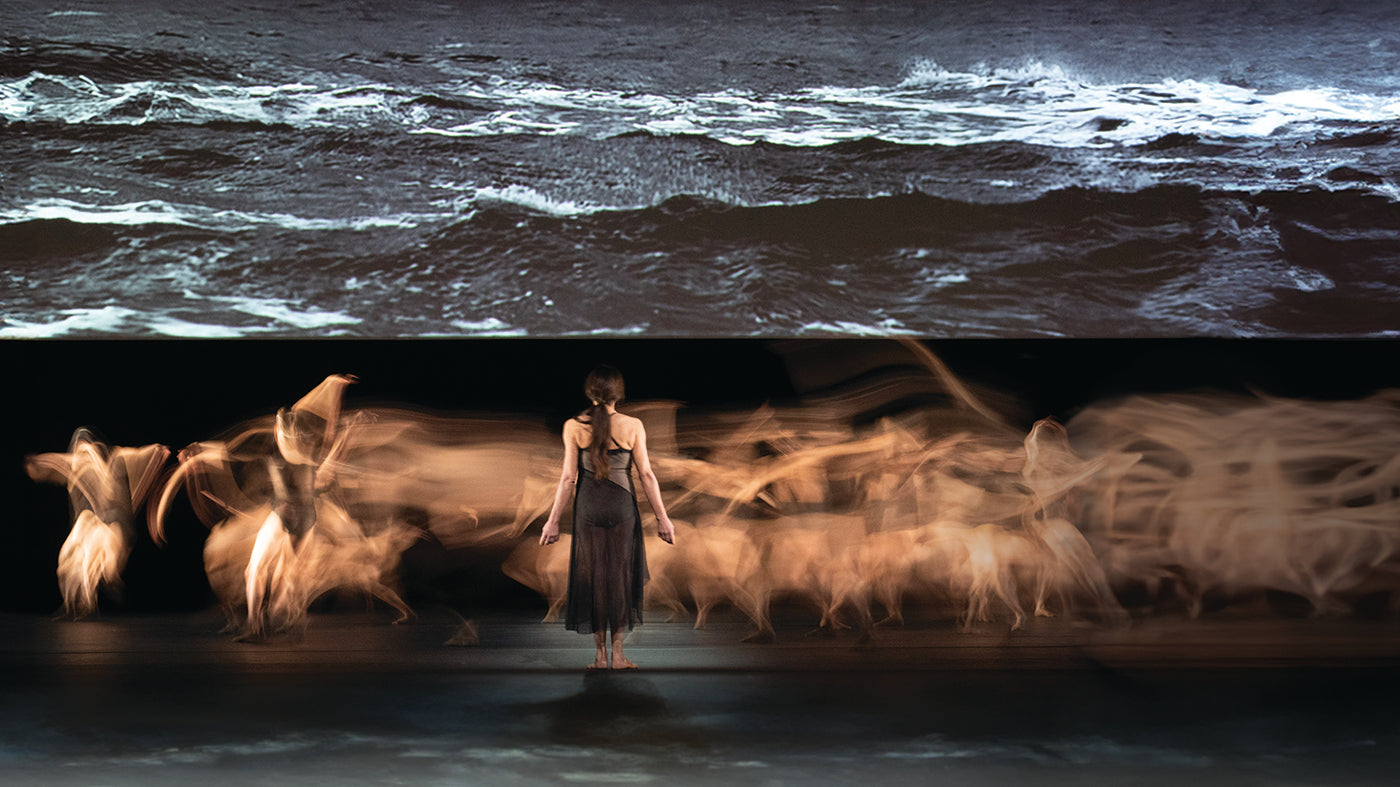The ubiquity of sparkle should have come as little surprise—Wilderness is, after all, one of the glitzier music festivals on the UK circuit, known for attracting fancy dress aficionados with its extravagant costume themes, which included ‘Kaleidoscope,’ ‘Gold Rush’ and ‘Goblin Ball’ this year. And boy, do guests commit: during my weekend stay I took in floor-length velvet capes, two-foot-tall top hats, spangled bodysuits supplemented with gold parasols and elaborate neon body paint.
It’s a decadent brand of debauchery—a hedonism distinctly bougier than the cheerfully messy ongoings of mega-festivals like Glastonbury. Think Latitude meets a fly-by-night Skull and Bones operation. The performing arts slant no doubt accounts for much of the flair: along with music, Wilderness has an expansive programme of dance, theatre, opera, performance art, cabaret and even circus.
The festival is now in its sixth year, and while it’s grown to attract some 30,000 people, it still boasts the feel of a small, select affair. The gourmet food provision—upmarket food trucks purveying venison burgers and vegan maki rolls, long-table banquets hosted by the likes of Raymond Blanc—is a world away from the usual gut-busting fare and clearly designed to cater to an exclusive crowd. The gorgeous setting—an opus of rolling hills and leafy thickets, nestled along a river in Oxfordshire—also goes some way in solidifying the impression you’re tucked away somewhere secret and special.
“What I believe makes Wilderness different from other festivals is the sensitivity and consideration of the landscape in terms of the placement and design of venues and performance,” the festival’s arts and culture programmer, Tessa Clarfelt, told me in advance of the weekend. “It feels quite organic as a built environment. We’re so fortunate to have Cornbury Park as a home—it’s enchanting! This incredible parkland inspires magical theatre in the woods.”
2016 marks Clarfelt’s fifth year in her role, which sees her responsible for commissioning all the performance content at Wilderness. “In my first year, when the festival was only 8,000 people, I programmed a small stage and a few walkabout theatre acts,” she reports. “Now I spend the first half of my year researching, going to show after show, meeting practitioners and performers from all fields, coming up with new concepts and themes for venues and areas, receiving and reviewing proposals, and finding performers, activities and producers to work with us to ensure each year feels different, exciting and fresh to our audience.”
It’s thanks to Clarfelt that dance now forms a substantial part of the festival’s performance programme. “In 2013 I invited the choreographer Christine Sundt to present a piece of work in the Footsbarn Theatre with dancers from English National Ballet. This was so popular—a full theatre of 450! The following year I forged a partnership with Rambert, who came and performed to an audience of 1,000.” Rambert has returned each year since, and the festival’s also managed to draw in the likes of Richard Alston Dance Company, Just Us Dance Theatre and James Cousins Company. Works presented by Sadler’s Wells, the Place and Rambert formed the foundation of the 2016 programme, with a smattering of dance theatre offerings from smaller operations like Old Vic New Voices padding out the ticket.
“I think this year will establish dance as a core pillar in the Wilderness programme,” says Clarfelt, noting that “we’re introducing a new stage, the Atrium, to house most of dance programme. It has an outdoor dance platform covered with a large canopy—a sort of floating ceiling. It’s really elegant and creates that ideal indoor/outdoor effect.
“For the new stage, I wanted to provide a platform for great dance institutions to present work of their choice.” She continues, “Rambert, the Place and Sadler’s Wells were all supportive and enthusiastic about being involved in this new stage, and we’ve ended up with a spectacular dance line-up.”
Rambert scored the biggest slot of the three, with a series of performances and workshops spread over Saturday afternoon, plus a taster on Friday. “Rather than having just small stage times for the company, we decided to provide them with a three-hour stage takeover,” says Clarfelt.
The prospect was “incredibly exciting” to Joce Giles, Rambert’s director of creative projects, who kindly caught up with me the first day of the festival. “Rambert is known for its mainstage mixed bill touring—that’s the core of what we do—but there’s so much else that goes on in addition and feeds that. A platform like this gives us an opportunity to promote the exciting talent we have coming through, and expand and develop these works further.
“The festival falls in the holiday period for our dancers,” he continues. “For the past two years, we’ve used it as an opportunity for Rambert dancers who wanted to create some work and perform it during that period. Each time we showed a few short pieces made just for Wilderness. But this year, we have a more curated programme. Along with dancers from Rambert who want to present work, we have some choreographers from outside the company who’ve been invited to do so as well.”
This latter faction includes UK-based choreographers Ben Duke, Carlos Pons Guerra and James Cousins, “all of whom have some association with Rambert,” Giles explains. “With James, for example, we offered him and his company a research period earlier this year—he had access to our studios and dancers, and was able to do some research for a feature production based around Patrick Marber’s play Closer. We’re a well-established company and like to give smaller, independent choreographers that kind of support and opportunity.”
The works from Rambert’s own dancers, meanwhile—a duet each from Simone Damberg Würtz and Hannah Rudd—have arisen from the company’s in-house choreography development programme. Rudd’s work is brand new, while Damberg Würtz’s has been performed several times since its creation in 2014. “Nearly all of the works on show already existed in some format before the festival, which is different from previous years,” Giles points out. “We’re giving the choreographers a chance to revisit those works and take them a little further.”
Watching the works on hand, I was struck by their solemnity, not to mention their small scale – seeing the company perform showy picks like Christopher Bruce’s cheeky “Rooster” at Latitude last year evidently had me expecting a parade of big jazzy showstoppers, not a quiet selection of pensive duets and trios. Not that the programme felt out of place—on the contrary, it chimed well with the general atmosphere of the weekend, which for all its levity consistently skewed towards cerebral. That it managed to command a consistent amount of attention amid all the bustle certainly speaks to the serious-minded crowd Wilderness attracts. I’m reminded of the point in my Q&A with Clarfelt when she noted that “a transitory audience can be a challenge with outdoor stages, but we’re lucky to have a much more committed type of audience member, so that isn’t really a worry for us.”
Carlos Pons Guerra’s’ “Ruffle” was the highlight of the programme for me. The titillating duet embodies the thrill of sexual pursuit, with Rambert dancers Luke Ahmet and Mark Kelly squaring off in an edgy, charged battle of wills, each jockeying to command the other’s attention without exposing himself as vulnerable. Their affair is deliciously tense, a furious, violent dance of seduction spiced with feisty grips and erotic provocations. Clad only in underwear, the men peacock, tussle, embrace, shunt. They demand kisses only to deny them, wrestle themselves in and out of explicit clinches, a palpable magnetism undercutting their attempts at resistance. It’s a powerful look at male aggression and a brilliant display of narrative chops—the dancers’ evolution from prowling strangers to spent lovers, reduced to a limp tangle of limbs, was thrilling to witness.
Cousins’ “Within Her Eyes” and Damberg Würtz’s “RIFT” proved likewise gripping, though far gentler in tone. The former—an excerpt from the longer-length work of the same name, featuring dancers from Cousins’ company—is a soaring skein of picturesque lifts and swan dives, set against a wistful piano track. Georges Hann was the plinth to Chihiro Kawasaki’s statue, boosting her so that her feet never touched the ground, the pair cutting a brilliant figure against the blue summer sky. In the sunshine and open space, the quiet piece took on a brighter air than it did the first time I saw it, in a dark, hushed theatre in 2014—optimism rather than melancholy prevailed here, though hints of sadness still seeped through: rich expressions of longing, grasps at an invisible something just out of reach.
“RIFT” offers a similarly pensive tone. The work, performed at Wilderness by Rambert’s Daniel Davidson and Rob Bridger, explores guilt and conscience, the dancers springing and stretching to a live reading in Danish by the choreographer herself. Their white face paint and long tunics have a strong whiff of Pierrot about them, as does the choreography, a lyrical mix of mime and contemporary dance bolstered by the pair’s excellent synchronicity. The melancholy motif is aided by Damberg Würtz’s oration, which is resonant with retrospection—it’s easy to imagine she’s reading from a diary, or perhaps reciting a personal anecdote. No translation accompanied, making for a potentially alienating set-up, but what “RIFT” didn’t clarify through words it strongly suggested with expressive choreography: sorrow, regret, fortitude, articulated through cautious interactions and unleashed in displays of distress.
Hannah Rudd performed her offering with fellow Rambert dancer Liam Francis. The piece felt less developed than its peers, its slack structure giving the impression that it’s still in flux. It’s a bit of a slow-burner, but the brisk urgency that emerges in the middle—marked by vigorous leaps and throwaway arms—is lively and well conceived, as is the partnering, a blitz of half-tender, half-tangled embraces. Ben Duke’s untitled duet too offered the impression of a work in progress, though its melty contractions and sharp flexes were promising. The piece, performed ahead of the Saturday programme, matched dancer Neus Gil Cortes with drummer Tommy Evans, a silent dialogue emerging as the pair produced and responded to a range of obscure electric beats.
Finally, there was Anthony Middleton’s “Without End,” a rolling, lithe trio distinguished by its gymnastic feats, including some staggering one-handed lifts. The languid pace and repetitive industrial strum were a tad sleepy for my taste, but there was plenty of life in the dancers’ complicated partnering.
Bookending Rambert’s platform were workshops led by one of the company’s ‘Animateurs,’ who gamely taught the crowd some of the samba-inspired moves that make up Itzik Galili’s “A Linha Curva,” one of the company’s best-loved rep pieces. The sessions were light-hearted and exuberant—a terrific reminder that dancing isn’t restricted to those who’ve trained in it, and performance needn’t be confined hushed auditoriums.
“For us, performing here is a great way to reach people who might not have experienced contemporary dance before or might not have experienced Rambert,” says Giles. “Coming here takes us to audiences we might not engage with otherwise, and also gives us the chance to develop work and experience performance opportunities that might not otherwise exist. Take Ben Duke’s work—that came out of our development programme last year. It started out as something experimental, and now it’s here.
“In the last few years, festivals like Latitude and Wilderness have done so much to promote dance as part of their cultural offer,” he adds. “I think there’s a real hunger from audiences to have it in the mix. It’s great.”









comments